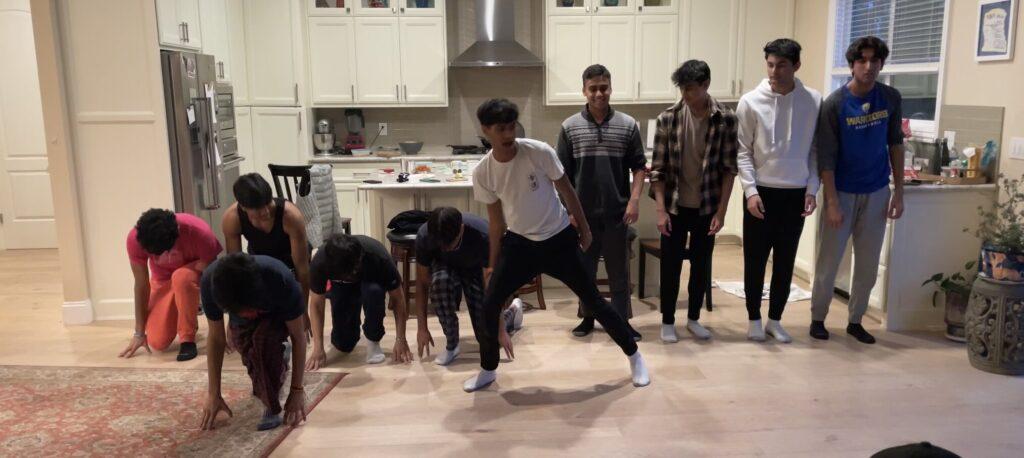For the first time since 2020, Saratoga High School’s Bombay in Bay will be returning back to its normal format: no drive-thru, no limitations on audience sizes and no masks.
Bombay in the Bay (BnB) — the annual Indian fusion dance show hosted by the school’s Indian Cultural Awareness Club (ICAC) — is set to take place on Feb. 17 and 18 at the McAfee Center.
The show consists of a multitude of different styles of Indian dance, from Bhangra to Classical dances. There is also a performance from the Tamasha team, the school’s competitive Bollywood dance team. In addition to the special dances, each grade has its own girls, boys and partners dance, with the seniors having an additional AMD (All Men’s Dance) and AGD (All Girls’ Dance).
One act making a comeback this year is singing, which for the last couple of years was pre-recorded to comply with COVID-19 protocols. This year, the act will have all the singers on stage singing a blend of Western and classical music live. The officers this year are seniors Anand Agarwal, Risha Desai, Avani Gupta, Annika Muju, Isha Jagadish, Varun Shah and Ojas Somani.
AMD and AGD are specifically reserved for seniors that have participated in three years of BnB. Normally, four years of participation are required, but because the 2020 show was recorded during the pandemic, the participation requirement was cut down to three. For AMD, the participation requirement is only for the dance’s video, while the rest of the dance is open to participation from any seniors. The show tickets for both days are $20. All tickets for both shows sold out a couple days after they were released.
Other than the changes to AMD and AGD, the seniors have created a streamlined system to learn the dance effectively and quickly. For example, according to senior participant Ela Machiroutu, AGD has taken a different approach to teaching the dance.
“On the first day, they taught all three songs at once,” she said. “At the second practice, which took place a week after we learned the songs, we reviewed the dances because a couple people weren’t there.”
For all the practices following the first, the participants have continued to review all the dances and begin working on the positions. Choreographers provide videos so that participants can also practice at home.
“This practice is effective because it means that some people can go ahead if they have mastered the first dance,” Machiroutu said.
Unlike the seniors, who have had three years of practice to get the formula down, the underclassmen are struggling this year due to a few different reasons. According to sophomore choreographer Shaan Janardan, the biggest difficulty this year is the drastic increase in participants across all grades. He added that sophomore participation has increased to 66 people from last year’s 36 people, including an increase to 29 boys from 14 boys in just the partner’s dance alone.
The increase in people brings several challenges, including the pressure and stress of teaching more than 60 people at once. If one person needs help, all the choreographers and participants have to stop and re-teach them, Janardhan said.
“We thought of a megaphone at one point in time, but I think now [the participants] understand that, if you’re not listening, you aren’t going to be in the song,” Janardhan said. “We also always have at least one choreographer who has a free tutorial to teach people that want help.”
Another challenge is consistent student participation, as a common problem for BnB and Quad Day alike is having participants consistently show up to practices.
“It’s also about people not showing up,” junior girls choreographer Ameya Saund said. “Some people can only come to practices on Sundays, others can’t come at all, so we have to resort to practicing during lunch and tutorial.”
Despite the adversity, both the sophomores and juniors have made leaps in their overall quality of their dance from the previous year. To solve the practice timing problem, junior choreographers sent out polls into their respective messenger chats, as well as film videos of participants and choreos dancing, so members who weren’t there for practices can refer back to them. In order to maximize time, especially nearing BnB, choreographers are also using tutorials to clean up their dances.
All of the hard work leads to an important focus, though. Aside from the show’s popular dances, ICAC raises and donates money to give to charity in India. Profits from the show this year go to “Koshish” and “One School at a Time,” two organizations in India involving educating unprivileged children.
“Though practices are picking up, it’s still important to recognize the true purpose for Bombay in the Bay,” Saund said. “As a group, we want to put in our best work to not only entertain and have fun, but to also raise money for an important cause.”


























